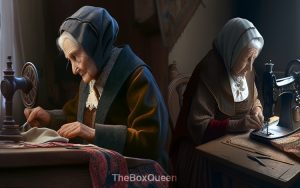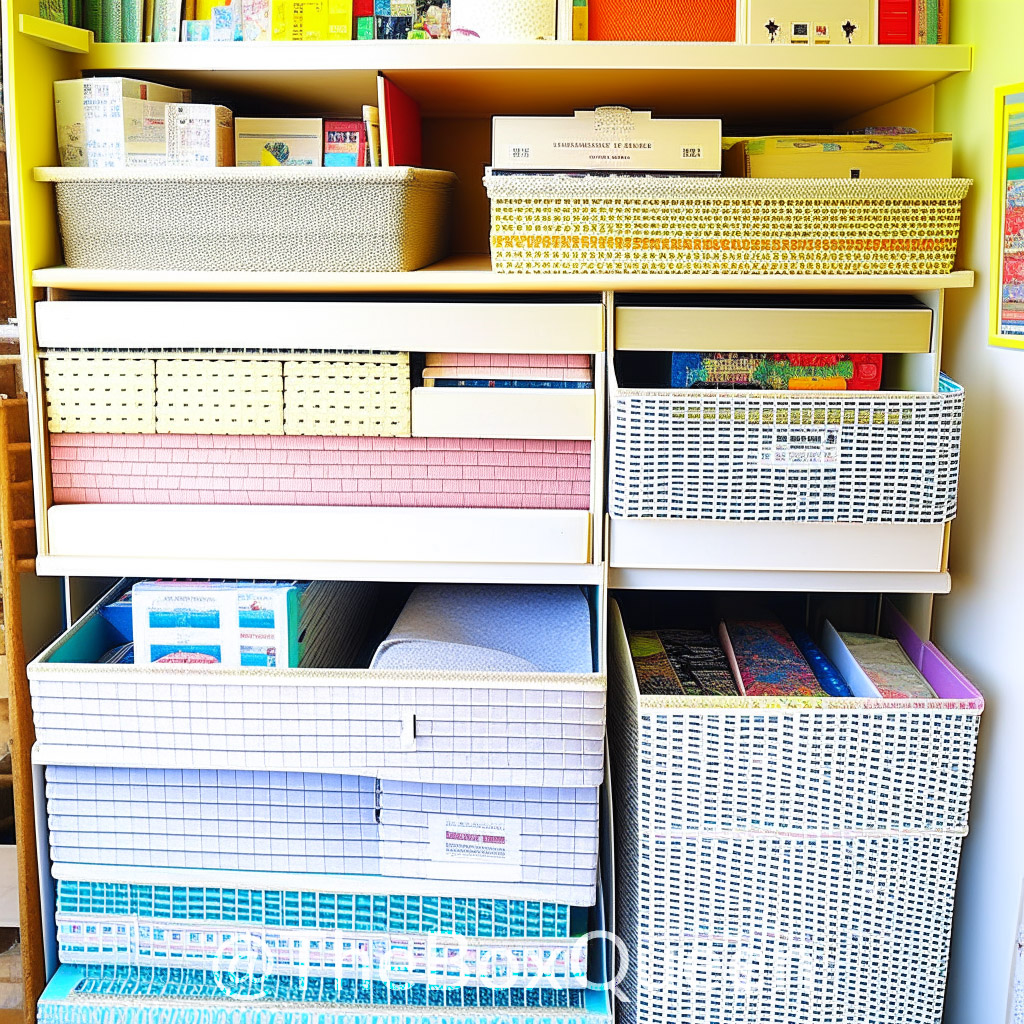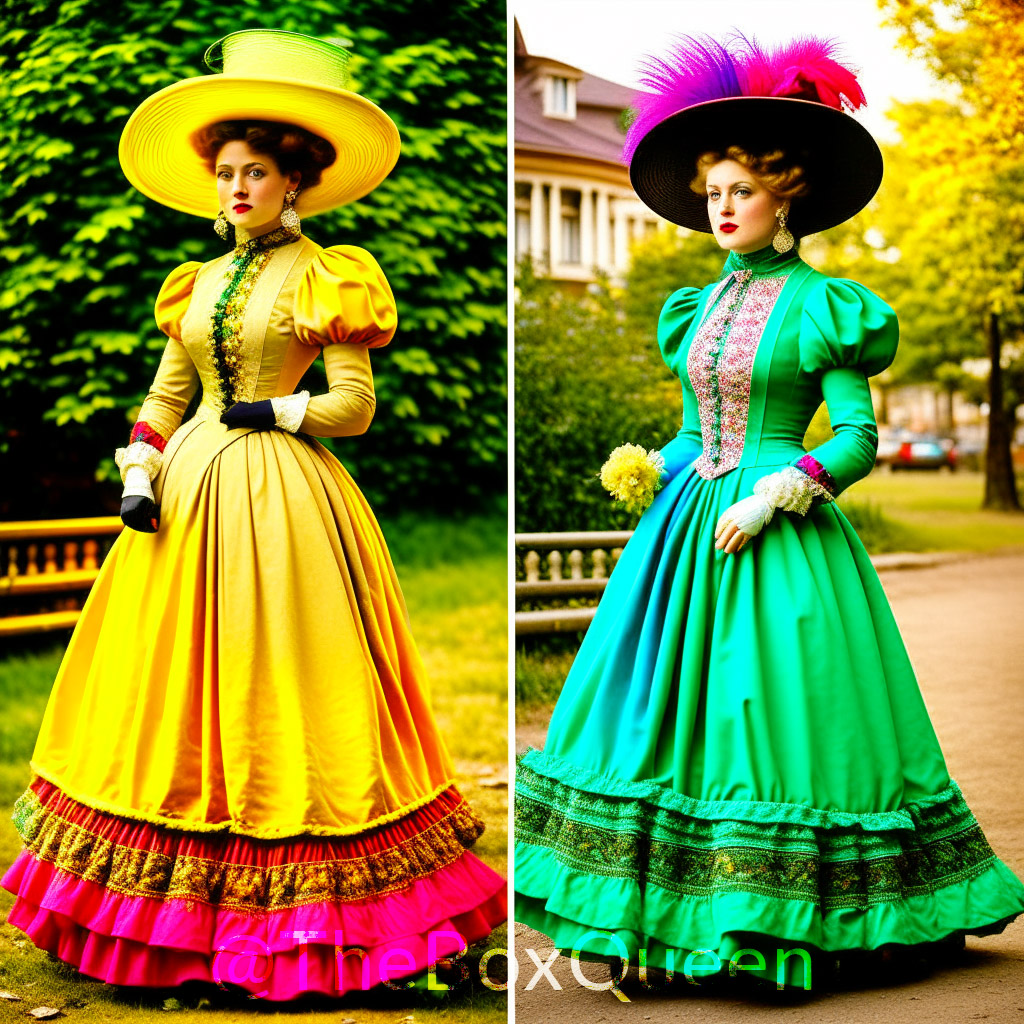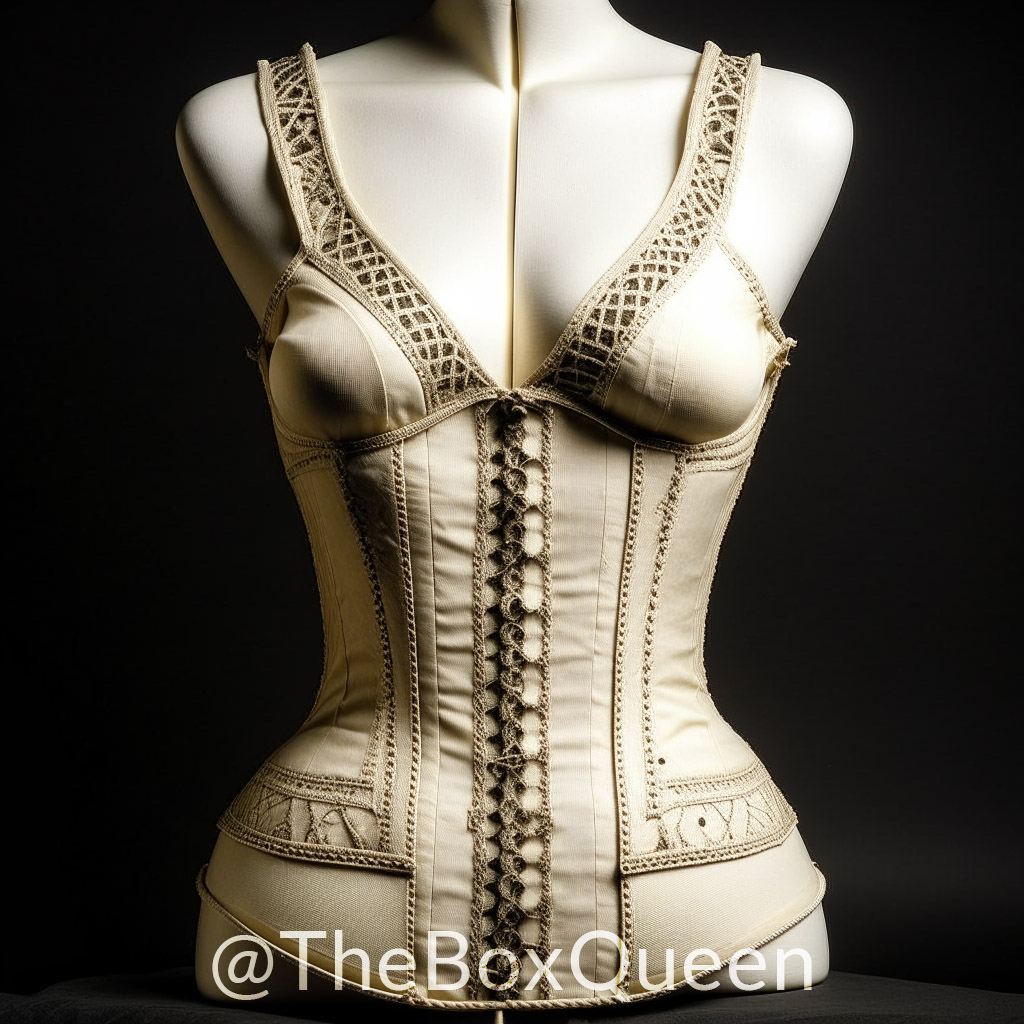The study and types of Sewing Techniques focuses on how sewing methods and fashions have changed over time. It includes everything from the development of the sewing machine in the 19th century to ancient Egyptian needlework. The creativity and technical expertise that go into making textiles, as well as the influence sewing has had on social and economic history, can both be better understood by studying sewing’s history. Modern fashion and design are also influenced by historical stitching. It takes a combination of research, attention to detail, and traditional processes to make accurate replicas of historical clothes. It entails comprehending the historical setting, investigating the original sources, developing patterns, locating materials, and utilizing conventional sewing and finishing methods.
The study of historical sewing can be furthered through a variety of tools, including books, workshops, online discussion forums, social media groups, and museums.
Hand sewing techniques
One of the oldest types of sewing is hand sewing, which has been used for centuries to make garments, bags, and other fabrics. It is a flexible, age-old method that is still frequently utilised today, particularly in the historical sewing industry. Without the aid of a machine, hand sewing involves manually creating stitches using a needle and thread.
Throughout history, a variety of hand-sewing methods have been employed, each serving a distinct function. Running stitch is a fundamental sewing technique that can be used to outline or unite two pieces of fabric. A stronger variation of the running stitch known as the backstitch is used for seams or outlining. Whipstitch is frequently employed for hemming and joining two pieces of fabric. A decorative method for completing the edges of blankets and other thick materials is blanket stitch.
Another method is embroidery, which dates back centuries and uses ornamental stitches to adorn clothing and materials. It was frequently used to make complex patterns and decorations. Using this method, you can adorn fabrics like bags, garments, and other items. It is regarded as a type of hand stitching, but as it is mostly decorative, it differs slightly from the fundamental hand sewing methods previously stated.
A needle and thread are used in the needle lace technique to make delicate lace patterns. Particularly in the 16th and 17th centuries, it was quite well-liked. This method, which is a decorative one like embroidery, is most often employed to produce elaborate and delicate lace motifs.
Techniques for hand sewing are employed in modern fashion and design as well as for historical clothing. Due to the time and care that goes into hand-sewing clothes, they are frequently thought of as being of higher quality. Additionally, hand-sewn clothing is frequently valued higher and handed down from generation to generation.
In conclusion, hand sewing is a time-honored method that has been applied to the production of garments, bags, and other textiles throughout history. Throughout history, a variety of hand-sewing methods have been employed, each serving a distinct function. Hand sewing offers a wide range of alternatives for making clothes and fabrics, from simple techniques like running thread to more complex skills like embroidery and needle lace. It is still a common method used today and is regarded as an artistic medium. For Complete Guide
Victorian sewing patterns:
Victorian sewing patterns are the popular designs and fashions from the Victorian era (1837-1901). Fashion underwent a tremendous change during this time, with an emphasis on more structured and form-fitting garments. New textile technologies were developed during the Victorian era, and the middle class expanded, increasing demand for apparel.
Fitted bodices, long skirts, and high necklines are common characteristics of Victorian sewing patterns. Corsets were frequently used to produce the desired hourglass form in women’s apparel during this time period, which frequently had a tightened waist. The adoption of waistcoats, top hats, and frock coats contributed to the more formal and fitted looks of men’s clothes during this time.
Along with many different types of embellishments, Victorian sewing patterns included lace, needlework, and ruffles. These embellishments were frequently employed to give clothing a touch of class and luxury. Additionally, several layers and trims like bustles, petticoats, and underskirts were frequently used in Victorian sewing patterns.
New textile technologies were also developed during the Victorian era, including the sewing machine, which transformed the apparel business by making it feasible to produce clothing swiftly and effectively.
Victorian sewing patterns are still widely used today by historical actors, costume designers, and members of the steampunk subculture. They serve as a source of inspiration for fashion designers as well. For Complete Guide
Linen sewing thread:
A type of thread created from flax plant fibres is linen sewing thread. It is renowned for its power, toughness, and abrasion resistance. One of the first known sewing threads, linen thread is thought to have originated in ancient Egypt. Due to its many appealing qualities, it is still commonly used today.
The flax plant’s fibres are spun into yarn, which is then twisted and plied together to produce a strong and enduring thread, to make linen. From fine to heavy, linen thread is readily available and suitable for a wide range of sewing tasks, including both hand and machine sewing.
Given that it was frequently employed in clothing and textiles during the mediaeval and early modern periods, linen thread is especially well-suited for use in historical sewing. Additionally, it is perfect for usage in upholstery, luggage, and other items of clothes and fabrics that may be exposed to weather or heavy use.
One benefit of using linen thread is that, unlike synthetic thread, it is a natural material that is environmentally benign and biodegradable. It does not rot readily and is renowned for its resistance to mould and mildew.
The colour of linen thread can range from natural white to coloured hues. Additionally, it can be treated or bleached to provide various results. For historical replicas and other projects aiming for a genuine, historical aesthetic, linen thread can offer a rustic, natural look when used in sewing Our Recommended linen.
However, it’s crucial to keep in mind that because linen thread is more likely to fray and break than other types of thread, working with it might be more challenging. When working with linen thread, it is advised to use a sharp needle and to stay away from textiles that are prone to snagging or abrasion.
In conclusion, linen sewing thread is a robust and long-lasting thread that is suitable for a variety of sewing tasks. It is most suited for use in historical stitching as well as in clothes and textiles that will be worn frequently or exposed to the elements. When working with linen thread, it’s critical to be mindful of its unique qualities, such as its propensity to fray and break. The appropriate strategy and attention to detail may make linen thread a fantastic option for a variety of sewing projects.
Regency gowns
Regency gowns are referred to as the fashionable clothing trends in the UK throughout the Regency period (1811–1820). The conclusion of the Georgian era and the start of the Victorian era, which defined the Regency era, brought about significant changes in society and fashion. Simplicity, elegance, and a resurgence in interest in classical motifs were characteristics of the clothing trends of this time.
Women’s regency gowns often had high waists, short sleeves, and a plain, unadorned form. They were composed of light materials like muslin, silk, or cotton. Long, sheer shawls or scarves as well as a variety of undergarments, including chemises, petticoats, and corsets, were frequently worn with the gowns.
Regency gowns for men often featured a more cut and fitting design and were made of wool or linen, with an emphasis on the new “Regency” style of dress that evolved during this time. Pantaloons, a shorter, tighter coat, and high-collared shirts were characteristics of this look.
The use of vivid colours and patterns is among the most recognizable characteristics of Regency garments. Deep reds, blues, and greens were among the bright and frequently aggressive colours utilised in this era’s textiles. Regency dresses were renowned for their use of lace, embroidery, and other ornate accents.
Today, followers of Jane Austen’s novels, historical reenactors, and costumers all still like wearing Regency costumes. They serve as a source of inspiration for modern garment designs in the fashion industry as well.
In conclusion, Regency clothing is distinguished by its simplicity, elegance, and resurgence of classical themes. Lightweight fabrics, high waists, short sleeves, and an uncluttered silhouette were all characteristics of these garments. They remain popular among those interested in historical fashion and costuming because of their use of vivid colours, patterns, and ornamental decorations.

Historical sewing books
There are numerous books that discuss the development of sewing and offer details on age-old methods and fashions. You might find the following historical sewing books to be helpful:
- “The Complete Costume History” by François Boucher – This book is considered a classic in the field of costume history and covers the fashion and clothing of Western Europe from ancient times to the 20th century. Check Out Now
- “The Cut of Women’s Clothes 1600-1930” by Norah Waugh – This book is a comprehensive guide to the history of women’s fashion and clothing during the 17th, 18th, 19th and early 20th centuries. It covers patterns, styles, and construction techniques. Check Out Now
- “The Medieval Tailor’s Assistant” by Sarah Thursfield – This book is a comprehensive guide to medieval clothing, with patterns and instructions for creating authentic medieval garments. Check Out Now
- “Period Costume for Stage & Screen: Patterns for Women’s Dress 1500-1800” by Jean Hunnisett – This book provides patterns and instructions for creating authentic historical garments for stage and screen. Check Out Now
- “The Evolution of Fashion: Pattern and Cut from 1066 to 1930” by Margaret MacGregor – This book covers the history of fashion, patterns and cutting techniques from the 11th century to the 20th century. Check Out Now
- “The Costume Technician’s Handbook” by Rosemary Ingham and Liz Covey – This book is a comprehensive guide to costume construction and design, with information on fabrics, patterns, and techniques. Check Out Now
- “The Well-Dressed Child: A History of Children’s Clothing” by Elizabeth Ewing – This book covers the history of children’s clothing from the 16th century to the 20th century, with a focus on patterns, styles, and construction techniques. Check Out Now
- “The Complete Book of Sewing Techniques” by Linda Clements – This book covers a wide range of sewing techniques, including hand-sewing, machine-sewing, and embroidery, and is ideal for both beginners and experienced sewers. Check Out Now
These are but a few illustrations; there are many more historical sewing books available that deal with a variety of subjects and eras. Whether they are novice or expert sewers, these publications can be a great source of knowledge and inspiration for anyone who are interested in historical sewing. They can aid in research and material procurement as well as give a deeper understanding of historical garments, patterns, and construction methods. Many of these books also contain patterns, illustrations, and detailed instructions that can be used to make accurate replicas of old clothing.
It’s crucial to choose a book that fits your particular area of interest because many of these books are focused on particular time periods and cultures. Others may span a wider range of time periods, while some novels may concentrate on a single period, such as the Regency Period.
Before making a purchase, it’s vital to read reviews and get a sense of the author’s experience and skill because these books are written by a variety of authors, some of whom are experts and others who are merely amateurs.
In general, everyone interested in historical sewing and costume creation can benefit from reading historical sewing books. They can offer a wealth of knowledge, inspiration, and direction for making accurate replicas of historical clothing.
Types of sewing techniques workshops
Workshops for teaching traditional and historical sewing skills are classes or training sessions that specialise in this subject. These classes can be held online, at community centres, craft schools, museums, and other places. They are frequently guided by skilled instructors who are aware about the development of sewing and its methods.
A wide number of themes can be covered in historical sewing workshops, including
- Techniques for creating authentic reproductions of historical garments
- Researching and sourcing historical fabrics and materials
- Drafting and patternmaking for historical garments
- Hand-sewing and finishing techniques
- Construction methods for specific types of historical garments such as corsets, petticoats, or men’s waistcoats.
Participants in historical sewing classes should anticipate picking up new skills and methods in addition to learning more about the history of sewing. Additionally, they can work on their own projects while getting direction and criticism from the instructor. These seminars can also give attendees a chance to meet others who share their interest in historical sewing, which could be beneficial for networking and discovering resources.
Anyone interested in historical sewing can acquire new skills and techniques as well as interact with other enthusiasts through historical sewing workshops.
They can also be an excellent way for seasoned sewers to expand their knowledge of traditional methods and fashions. Workshops may be provided on a regular basis by some institutions, museums, and historical places while they may be provided less frequently or in conjunction with special events or exhibitions. There are also online classes and workshops available.
Before enrolling, it’s critical to review the course’s level to ensure that it corresponds to your knowledge and ability level as well as the materials needed to participate.
Conclusion:
In conclusion, the study of how sewing methods and fashions have changed over time is a fascinating aspect of historical sewing. It covers a range of hand-sewing and machine-sewing procedures in addition to historical analysis, research, material sourcing, pattern-making, and finishing processes. There are many materials available to assist you delve into the realm of historical sewing, whether your interests lie in making accurate replicas of historical clothing, comprehending the development of fashion, or discovering old textile processes. There are numerous ways to increase your knowledge of and proficiency in historical sewing, including books, workshops, online courses, and online communities.
Fashion and design from now might be inspired by historical stitching. Whether you’re a novice or an expert sewer, it’s crucial to find the materials that suit your particular interests and skill level and to enjoy the process of learning and producing.



